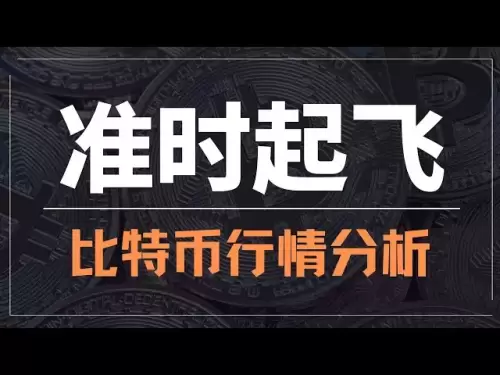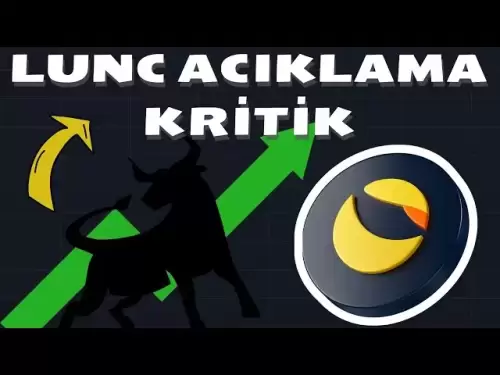-
 Bitcoin
Bitcoin $116500
1.98% -
 Ethereum
Ethereum $3851
6.94% -
 XRP
XRP $3.070
3.95% -
 Tether USDt
Tether USDt $1.000
0.04% -
 BNB
BNB $774.7
1.77% -
 Solana
Solana $171.9
4.66% -
 USDC
USDC $1.000
0.01% -
 Dogecoin
Dogecoin $0.2142
6.71% -
 TRON
TRON $0.3387
1.28% -
 Cardano
Cardano $0.7678
5.61% -
 Sui
Sui $3.747
9.68% -
 Hyperliquid
Hyperliquid $39.16
3.69% -
 Stellar
Stellar $0.4157
6.28% -
 Chainlink
Chainlink $17.93
9.21% -
 Bitcoin Cash
Bitcoin Cash $578.1
3.28% -
 Hedera
Hedera $0.2531
5.60% -
 Ethena USDe
Ethena USDe $1.001
-0.02% -
 Avalanche
Avalanche $22.75
3.82% -
 Litecoin
Litecoin $120.1
3.76% -
 UNUS SED LEO
UNUS SED LEO $8.953
-0.37% -
 Toncoin
Toncoin $3.323
4.76% -
 Shiba Inu
Shiba Inu $0.00001266
4.22% -
 Uniswap
Uniswap $10.13
7.08% -
 Polkadot
Polkadot $3.786
5.09% -
 Dai
Dai $1.000
-0.02% -
 Monero
Monero $273.0
-5.03% -
 Bitget Token
Bitget Token $4.391
1.62% -
 Cronos
Cronos $0.1480
5.45% -
 Pepe
Pepe $0.00001091
5.80% -
 Ethena
Ethena $0.6314
11.93%
Which of XRP's spot and contract trading is more suitable for short-term trading?
For short-term XRP trading, spot trading offers quick execution and lower risk, while contract trading provides leverage and flexibility, suiting different risk profiles.
Apr 20, 2025 at 01:15 am

When considering whether spot or contract trading of XRP is more suitable for short-term trading, it's essential to understand the fundamental differences between these two trading methods and how they align with the goals of short-term trading. Short-term trading, often referred to as day trading or scalping, involves holding positions for a brief period, sometimes just minutes or hours, to capitalize on small price movements. Let's delve into the specifics of XRP spot and contract trading to determine which might be more appropriate for this type of trading strategy.
Understanding XRP Spot Trading
Spot trading involves the direct purchase and sale of XRP at the current market price. When you engage in spot trading, you are essentially buying or selling the actual cryptocurrency. This method is straightforward and allows traders to take immediate ownership of the asset.
- Liquidity: XRP has high liquidity on many spot trading platforms, which means traders can quickly enter and exit positions. High liquidity is crucial for short-term trading as it reduces the risk of slippage and allows for rapid execution of trades.
- Cost: Spot trading typically involves lower fees compared to contract trading. This can be advantageous for short-term traders who frequently buy and sell, as lower transaction costs can significantly impact overall profitability.
- Risk: The risk in spot trading is primarily related to the price movement of XRP. If the price moves against your position, your potential loss is limited to the amount you invested.
Understanding XRP Contract Trading
Contract trading, also known as futures or derivatives trading, involves trading contracts that derive their value from the underlying asset, in this case, XRP. These contracts can be used to speculate on the future price of XRP without actually owning the cryptocurrency.
- Leverage: One of the most significant advantages of contract trading is the ability to use leverage. Leverage allows traders to control a larger position with a smaller amount of capital, potentially amplifying profits. However, it also increases the risk, as losses can exceed the initial investment.
- Flexibility: Contract trading offers more flexibility in terms of trading strategies. Traders can take long or short positions, allowing them to profit from both rising and falling markets. This is particularly useful for short-term traders who need to adapt quickly to market conditions.
- Complexity: Contract trading is generally more complex than spot trading. It involves understanding concepts like margin, liquidation, and funding rates, which can be challenging for beginners.
Comparing Spot and Contract Trading for Short-Term Trading
When it comes to short-term trading, both spot and contract trading have their merits, but they cater to different needs and risk profiles.
- Speed and Execution: For short-term trading, the ability to execute trades quickly is crucial. Spot trading offers immediate execution and high liquidity, making it suitable for traders who need to enter and exit positions rapidly. Contract trading, while also offering high liquidity, can involve additional steps like setting up margin accounts and managing leverage, which might slow down the trading process.
- Risk Management: Short-term traders need effective risk management strategies. Spot trading involves straightforward risk management, as the potential loss is limited to the amount invested. Contract trading, with its leverage, can lead to significant losses if not managed properly. However, it also offers tools like stop-loss orders and take-profit orders, which can be beneficial for managing risk in short-term trades.
- Profit Potential: The profit potential in spot trading is limited to the price movement of XRP. Contract trading, with its leverage, can offer higher profit potential, but it also comes with increased risk. Short-term traders who are comfortable with higher risk might find contract trading more suitable.
Practical Considerations for Short-Term Trading with XRP
For traders considering short-term trading with XRP, here are some practical steps to take, depending on whether you choose spot or contract trading:
Spot Trading Steps
- Choose a Reliable Exchange: Select a reputable cryptocurrency exchange that offers XRP spot trading with high liquidity and low fees.
- Fund Your Account: Deposit funds into your exchange account using a method that suits your needs, such as bank transfer or credit card.
- Analyze the Market: Use technical analysis tools to identify potential entry and exit points for XRP.
- Execute Trades: Place buy and sell orders based on your analysis. Use limit orders to control the price at which you buy or sell.
- Monitor and Adjust: Continuously monitor the market and adjust your positions as needed. Use stop-loss orders to limit potential losses.
Contract Trading Steps
- Choose a Reliable Exchange: Select an exchange that offers XRP contract trading with high liquidity and competitive fees.
- Set Up a Margin Account: Open a margin account and deposit the required initial margin.
- Understand Leverage: Determine the appropriate leverage level for your risk tolerance. Higher leverage increases both potential profits and losses.
- Analyze the Market: Use technical and possibly fundamental analysis to identify trading opportunities.
- Place Orders: Execute trades by placing long or short positions. Use stop-loss and take-profit orders to manage risk.
- Monitor and Adjust: Keep an eye on your positions and market conditions. Adjust your leverage and positions as necessary to manage risk and maximize profits.
Choosing Between Spot and Contract Trading
The choice between spot and contract trading for short-term trading with XRP depends on several factors, including your risk tolerance, trading experience, and capital availability.
- Risk Tolerance: If you have a low risk tolerance, spot trading might be more suitable as it limits your potential loss to the amount invested. If you are comfortable with higher risk and potential rewards, contract trading with leverage could be more appealing.
- Trading Experience: Beginners might find spot trading easier to understand and manage. Contract trading requires a deeper understanding of derivatives and risk management, making it more suitable for experienced traders.
- Capital Availability: Spot trading requires more capital to achieve the same position size as contract trading with leverage. If you have limited capital, contract trading might allow you to trade larger positions.
Frequently Asked Questions
Q1: Can I switch between spot and contract trading for XRP on the same platform?
A1: Many cryptocurrency exchanges offer both spot and contract trading for XRP on the same platform. However, you may need to set up separate accounts or sections within your account for spot and contract trading. Always check the specific requirements of your chosen exchange.
Q2: Are there any regulatory considerations I should be aware of when trading XRP?
A2: Regulatory considerations can vary by jurisdiction. Some countries have specific regulations regarding cryptocurrency trading, including XRP. It's essential to research and comply with the regulations in your area, especially when engaging in contract trading, which can be subject to stricter oversight.
Q3: How does the volatility of XRP affect short-term trading strategies?
A3: XRP's volatility can significantly impact short-term trading strategies. High volatility can offer more trading opportunities but also increases the risk of price swings against your positions. Short-term traders should use technical analysis and risk management tools to navigate XRP's volatility effectively.
Q4: Can I use automated trading bots for short-term trading of XRP?
A4: Yes, automated trading bots can be used for short-term trading of XRP on both spot and contract trading platforms. These bots can execute trades based on predefined criteria, potentially increasing efficiency and reducing emotional decision-making. However, it's crucial to thoroughly test and monitor any bot to ensure it aligns with your trading strategy and risk tolerance.
Disclaimer:info@kdj.com
The information provided is not trading advice. kdj.com does not assume any responsibility for any investments made based on the information provided in this article. Cryptocurrencies are highly volatile and it is highly recommended that you invest with caution after thorough research!
If you believe that the content used on this website infringes your copyright, please contact us immediately (info@kdj.com) and we will delete it promptly.
- WiMi, Quantum Computing, and AR Tech: Navigating the Future Today
- 2025-08-07 22:30:12
- BitcoinFi: From Building Blocks to Usable Products – Staking, Lending, and Beyond
- 2025-08-07 22:30:12
- Dogecoin, Crypto, and the 25x Gains Dream: What's Next?
- 2025-08-07 20:50:12
- Dogecoin: A Second Chance for the OG Meme Coin?
- 2025-08-07 20:50:12
- BlockchainFX: Your Choice for Long-Term Crypto Gains?
- 2025-08-07 21:10:12
- Pepe Dollar's Presale Mania: Memecoin Staking and the Crypto Revolution
- 2025-08-07 21:10:12
Related knowledge

How to avoid common crypto investment mistakes?
Jul 13,2025 at 01:35am
Understanding the Risks of Crypto InvestmentInvesting in cryptocurrency can be highly rewarding, but it also comes with significant risks. One of the ...

What is a long-short crypto strategy?
Jul 15,2025 at 10:56am
Understanding the Basics of a Long-Short Crypto StrategyA long-short crypto strategy is an investment approach where traders simultaneously take long ...

What is a long-short crypto strategy?
Jul 11,2025 at 01:28pm
Understanding the Basics of Long-Short Crypto StrategyA long-short crypto strategy is an investment approach where traders take both long and short po...

How to use the RSI indicator for crypto?
Jul 12,2025 at 03:56pm
Understanding the RSI Indicator in Cryptocurrency TradingThe Relative Strength Index (RSI) is a momentum oscillator used to measure the speed and chan...

Is copy trading a good strategy for crypto beginners?
Jul 12,2025 at 08:28am
Understanding Copy Trading in the Cryptocurrency MarketCopy trading is a strategy where novice traders replicate the trades of experienced investors a...

How to build a crypto portfolio with $1000?
Jul 13,2025 at 08:14pm
Understanding the Basics of Cryptocurrency InvestmentBuilding a crypto portfolio with $1000 starts with understanding the fundamentals of cryptocurren...

How to avoid common crypto investment mistakes?
Jul 13,2025 at 01:35am
Understanding the Risks of Crypto InvestmentInvesting in cryptocurrency can be highly rewarding, but it also comes with significant risks. One of the ...

What is a long-short crypto strategy?
Jul 15,2025 at 10:56am
Understanding the Basics of a Long-Short Crypto StrategyA long-short crypto strategy is an investment approach where traders simultaneously take long ...

What is a long-short crypto strategy?
Jul 11,2025 at 01:28pm
Understanding the Basics of Long-Short Crypto StrategyA long-short crypto strategy is an investment approach where traders take both long and short po...

How to use the RSI indicator for crypto?
Jul 12,2025 at 03:56pm
Understanding the RSI Indicator in Cryptocurrency TradingThe Relative Strength Index (RSI) is a momentum oscillator used to measure the speed and chan...

Is copy trading a good strategy for crypto beginners?
Jul 12,2025 at 08:28am
Understanding Copy Trading in the Cryptocurrency MarketCopy trading is a strategy where novice traders replicate the trades of experienced investors a...

How to build a crypto portfolio with $1000?
Jul 13,2025 at 08:14pm
Understanding the Basics of Cryptocurrency InvestmentBuilding a crypto portfolio with $1000 starts with understanding the fundamentals of cryptocurren...
See all articles

























































































